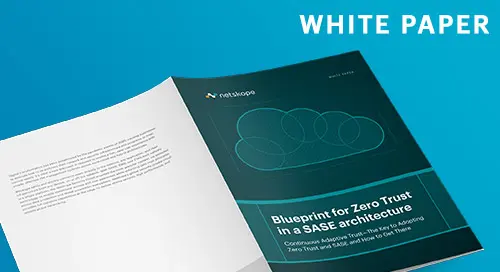ゼロトラストソリューションには、多要素認証 (MFA) から ID とアクセス管理 (IAM)、暗号化、スコアリング、ファイルシステムのアクセス許可など、さまざまな機能とテクノロジが混在している必要があります。
Netskope のZTNA Nextソリューションは、クラウドネイティブの ZTNA プラットフォームとして多様な環境をサポートするように特別に設計されています。 包括的なアクセス ポリシー管理、コンプライアンス評価、既存の IAM およびセキュリティ情報およびイベント管理 (SIEM) ソリューションとの統合を組み合わせ、あらゆるアプリケーションとプロトコルをサポートすることで、ネットワークとセキュリティの運用を簡素化します。
また、このソリューションは、インラインCASB、データ損失防止 (DLP)、SWG、高度な脅威からの保護 (ATP) など、複数の統合されたクラウドネイティブ技術で構成されるNetskope Next Generation Secure Web Gateway (NG SWG)との統合による拡張保護も提供します。
この統合により、ハイブリッドクラウド環境の独自の統一された可視性と保護が提供され、DLPやATPなどの遅延の影響を受けやすいセキュリティ機能が強化されます。 たとえば、ユーザーは、 Netskopeのリアルタイムコーチング、データ保護、およびアプリケーションアクティビティ制御により、 ChatGPT やその他の生成AIアプリを安全に使用できるようになります。
簡単に言えば、Netskope の ZTNA Next は、あらゆる環境のあらゆるアプリケーションに対して、ZT アクセシビリティへの次世代アプローチを提供します。
Netskope One の基本要素をご紹介します。 Zero Trust Engine




 Back
Back




















